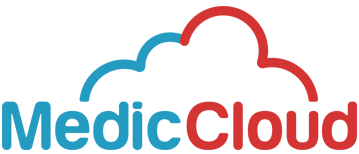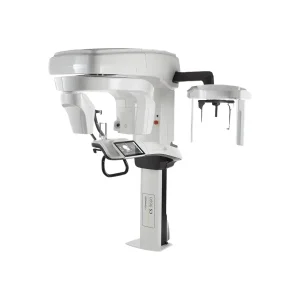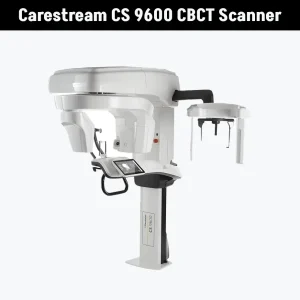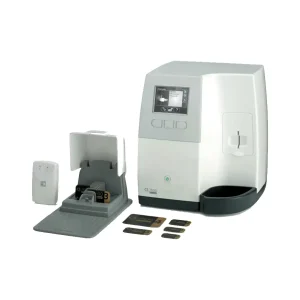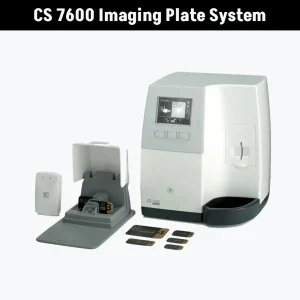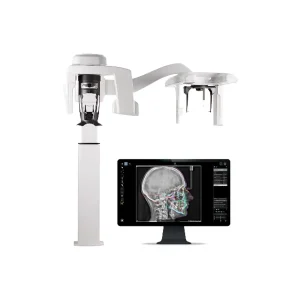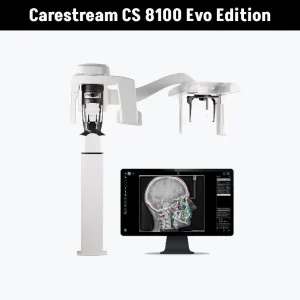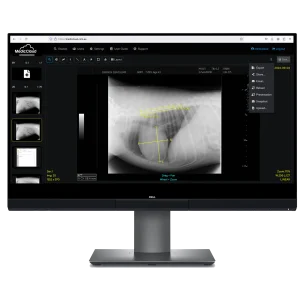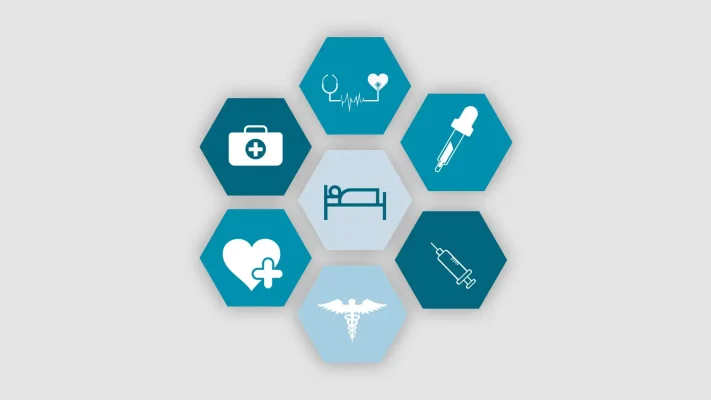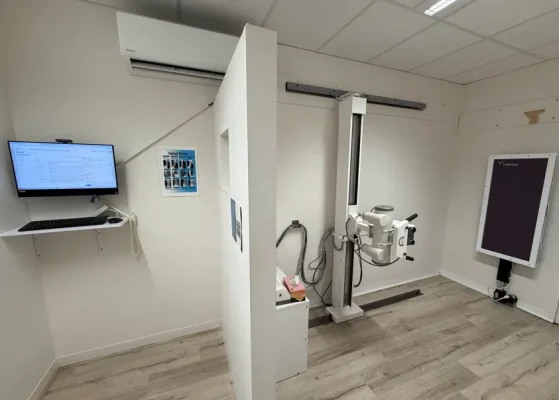Home » CBCT Systems and the Power of Field of View
CBCT Systems and dental specialists
Cone Beam Computed Tomography (CBCT) systems have transformed dental imaging, offering unparalleled detail and versatility through customisable fields of view (FOV). Understanding the importance of FOV and how it applies to different diagnostic scenarios can help radiologists better meet the needs of dental specialists. By adapting reporting techniques, radiology centres can maximise their referrals and strengthen collaborative relationships with dental practitioners.
🔈 Listen as podcast
Title: Cone Beam Computed Tomography Systems and the power of Field-of-ViewDuration: 05:05
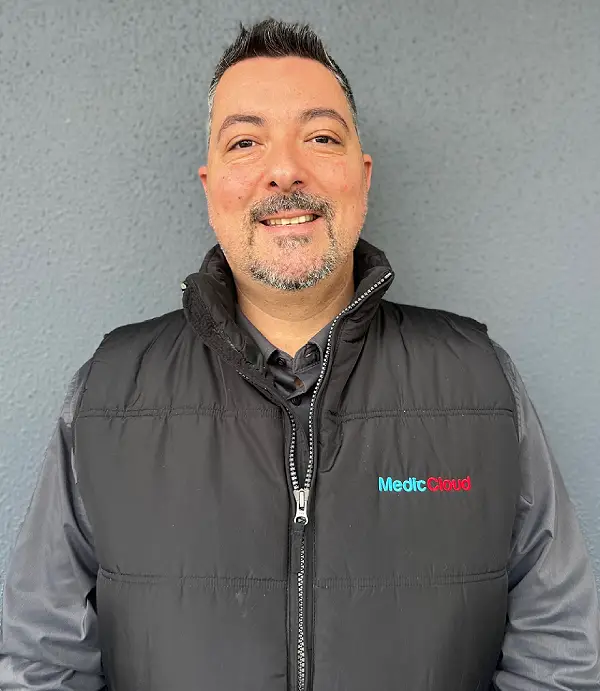
Sam, Medic Cloud Managing Director
What is FOV in CBCT?
The FOV in a CBCT system refers to the area captured during a scan. CBCT systems offer a range of FOV options, from small, targeted regions to comprehensive full-jaw or craniofacial views. The ability to adjust the FOV allows radiologists to tailor scans to specific diagnostic requirements, optimising image quality and minimising unnecessary radiation exposure.
Common FOV Categories:
- Small FOV: Targets a single tooth or a specific region.
- Applications: Endodontics, single implant planning, and small lesion evaluations.
- Medium FOV: Captures a quadrant or half of the jaw.
- Applications: Implant planning involving adjacent teeth or evaluating localised bone density.
- Large FOV: Covers the entire dental arch or the craniofacial region.
- Applications: Orthodontic assessments, TMJ analysis, and complex surgical planning.
How FOV impacts diagnostics
The flexibility of FOV selection allows radiologists to address specific clinical questions posed by dental specialists, ensuring that the imaging data provided is both relevant and actionable.
- Endodontics: Small FOV scans can reveal intricate root canal structures or identify periapical lesions that standard 2D imaging might miss.
- Implantology: Medium FOV scans provide detailed views of bone density and adjacent anatomical structures, critical for safe implant placement.
- Orthodontics: Large FOV scans capture comprehensive craniofacial data, supporting precise treatment planning for malocclusion corrections and jaw alignment surgeries.
- Pathology: Large FOV scans are invaluable for detecting and monitoring cysts, tumours, or other abnormalities affecting the jaws and surrounding structures.
Bridging the gap: What dental specialists need
Dental specialists often look for specific details in CBCT reports that go beyond pathology-focused analysis. By tailoring their reports to include these elements, radiologists can better align with the needs of dental practitioners.
Key considerations for dental specialist referrals:
- Anatomical landmarks: Highlight critical areas such as the inferior alveolar nerve, sinus cavities, and root proximity to vital structures.
- Bone quality and density: Provide detailed information relevant to implantology or surgical planning.
- Occlusion and alignment: Include insights into the alignment of teeth and jaws for orthodontic or surgical cases.
- TMJ analysis: Ensure that scans cover the temporomandibular joint when requested, with detailed assessments of joint health.
By addressing these elements, radiologists can create reports that are not only diagnostic but also highly practical for treatment planning.
Carestream solutions we offer at Medic Cloud
Our range of Carestream x-ray solutions.
Maximising referrals through enhanced reporting
To attract more referrals from dental specialists, radiologists can:
- Educate specialists on FOV Options: Clearly communicate how different FOV settings can address specific clinical needs.
- Customise reports: Include detailed descriptions, annotated images, and actionable insights tailored to dental practitioners.
- Offer value-added services: Provide additional interpretations, such as implant planning assistance or 3D visualisations, to enhance collaboration.
Carestream Dental CBCT Models and their FOV capabilities
Medic Cloud is proud to supply the Carestream Dental CBCT range, designed to meet the diverse needs of radiology centres and dental specialists. Each model offers specific FOV capabilities to address varying clinical applications:
- Carestream Dental CS 8100 3D:
- FOV options: Small to medium (4 cm x 4 cm to 8 cm x 9 cm).
- Best for: Endodontics, implant planning, and general dental diagnostics.
- Why we recommend it: Compact design, user-friendly interface, and high-quality imaging for routine dental cases.
- Carestream Dental CS 8200 3D:
- FOV options: Small to large (4 cm x 4 cm to 12 cm x 10 cm).
- Best for: Versatile imaging needs, including implants, TMJ analysis, and orthodontics.
- Why we recommend it: Advanced features, excellent image quality, and scalability for growing practices.
- Carestream Dental CS 9600:
- FOV options: Extensive range (4 cm x 4 cm to 16 cm x 17 cm).
- Best for: Complex cases requiring full craniofacial imaging, such as orthognathic surgery planning and pathology assessments.
- Why we recommend it: Industry-leading technology, automated patient positioning, and exceptional versatility for comprehensive imaging.
By offering these models, Medic Cloud ensures that radiology centres can select the perfect CBCT solution to meet their clinical and business needs.
Conclusion
CBCT systems with customisable FOV options empower radiologists to meet the diverse needs of dental specialists, from routine diagnostics to complex treatment planning. By understanding the specific requirements of their referral base and adjusting their reporting techniques, radiology centres can enhance collaboration, attract more referrals, and deliver exceptional value to their clients.
Contact Medic Cloud today to learn more about how the Carestream Dental CBCT range can elevate your imaging services and help you build stronger partnerships with dental specialists.
Read more blogs

Subscribe to Medic Hub
Get the latest insights direct to your inbox.
